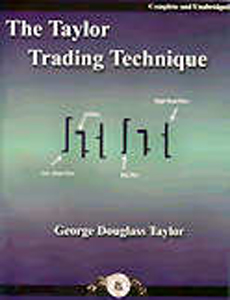Glossary of Stock Trading and Investment Terminology
A non-renounceable rights issue is when a company offers its shareholders the right to purchase more of the company's stock, usually at a discount to market rate. Compared to renounceable rights, the offer is not transferable to other parties and cannot be bought or sold. Issuing more shares of a stock dilutes the value of current outstanding stock on the market.
The Price-to-Book Ratio or P/B Ratio is determined by dividing the current closing price of a stock by the book value per share of the latest quarter. P/B Ratio is termed as price-equity ratio too.
Interpreting the Price-to-Book Ratio
Base Metals refer to some of the common non-ferrous industrial metals that easily corrode or oxidise. Although they are not as expensive as the precious metals like gold, platinum or silver, base metals are considered as some of the most important items of today’s commodity market. Lot of people are getting more and more interested about trading base metals these days since this particular sector offers a lot of potentials for those who are willing to make profit from the price discrepancy of the commodities.
The bid/offer spread refers to the difference between the bid price and offer price. To be more specific, it is the difference between the highest amount that a buyer is willing to spend for an asset and the lowest price/amount in exchange of which the seller is willing to sell it. “Bid price” is the selling price while the “offer price” is the purchase price.
For instance, if the bid price is $25 and the offer price is $26, then the bid/offer spread is going to be $26 - $25 = $1.
Bid/offer Spread- from the Perspective of the Stock Market
One Cancels Other (also known as OCO) is a kind of trading order that is formed by some conditional parts where execution of one part of the order automatically leads to the cancellation of the other part.
In case of the One Cancels the Other (OCO) order, the execution of one order results to the cancellation of another order. It means, an investor places two orders simultaneously and runs with the order that is triggered first.
Blue chip companies are nationally known companies whose dividends are deemed to be reliable. Blue chip companies issue blue chip stocks, generally high priced but with low yield. Although blue chips are considered to be stable, some companies still fall beyond expectations, like telecommunications companies crashing during the dot.com years. Blue chip stocks are listed in Standard & Poor's ASX 20 with prices usually following the S&P500.
Hybrid securities or 'hybrids' are a combination of two or more financial instruments. In general, hybrid securities combine the characteristics of both debt and equity. A common hybrid is a convertible bond. Convertible bonds feature the standard bond, but it is influenced by stock price movements into which it can be converted.
“Borrowing to invest” refers to borrowing money from a lender or financial institution to buy shares, bonds or managed funds. It is similar to taking out a mortgage to buy a house, land or any other property. This is a common practice among the investors and considered as an effective financial strategy as long as the entire procedure is managed properly. The whole idea of “borrowing to invest” is to invest more money in the market (stock market or managed funds) to increase profitability.
An annual report is an audited report that public companies are required to file. It details the preceding year's financial results and plans for the upcoming year. The document is available to shareholders and is released at the end of each fiscal year. In general, annual reports include financial data, audit report, management position, company information and data relevant to investors that is presented both in text and graphic form.
- How to Trade Forex and Gold Options
- How to Trade the Gold Price and Profit!
- Forex Trading the EUR/USD Pair € EURO and $ US Dollar
- How to Trade Stock Market Indices S&P500
- How to Trade Crude Oil
- Forex Trading Psychology
- What Are Broker Recommendations?
- Free Tickets to Trading & Investing Seminar & Expo ($18) Brisbane 2013
- Stock Calc App
- All About Warrants
- Introduction to Exchange Traded Funds
- Introduction to Exchange Traded Funds: Features
- Introduction to Exchange Traded Funds: Domestic ETFs
- Introduction to Exchange Traded Funds: International ETFs
- Exchange Traded Commodities
- Australian Stock Scan
- Australian Online Share Trading
- List of Trading Books
- Interesting Thoughts about the Australian Dollar
- What's the Meaning of Hawkish?
- Do You Know How To Use the P/E Ratio
- Trading, Religion and Politics - Do They Have Anything in Common?
- Shares that are Volatile that Double and Half in the Short Term
- Telstra (TLS) T3
- Margin Call by E-mail
- The Cost of Holding a Position
- Lack of Disclosure: Compensation from ASX Listed Company
- Unrealistic Returns and Benchmarks
- CMC Markets Down
- Quality versus Quantity Forex Trading
- Woolworths 1H Sales $30.7bn up 3.2%
Date added 31-01-2013 - ASIC Fines CommBank's CommSec
Date added 25-09-2012 - Industry Super Network Calls to Ban High Frequency Trading (HFT)
Date added 22-09-2012 - NAB Launches Online Share Trading Platform
Date added 19-09-2012 - Reserve Bank of Australia Says 23 Countries Holding AUD
Date added 18-09-2012 - Australia Post Digital Mailbox
Date added 10-09-2012 - Winners and Losers of Trading for Week 2
Date added 16-01-2012 - 2012's First Week of the Best and Worst Traded Stocks
Date added 09-01-2012 - 2011's Last Best and Worst Traded Stocks
Date added 05-01-2012 - Best and Worst Pre-Christmas Traded Stocks
Date added 30-12-2011 - Trading Winners and Losers for Dec. 12-16
Date added 19-12-2011 - Best and Worst Traded Stocks for Dec. 5-9
Date added 13-12-2011 - Top 3 Best and Worst Traded Stocks
Date added 05-12-2011 - ASX Glitch Trading Halt
Date added 27-10-2011 - Worst Trade Stocks (and the Best)
Date added 06-08-2011
Top 150 Public Companies Listed on the Australian Stockmarket as at 29/05/2009
- BHP Billiton
- Westpac Banking Corporation (WBC)
- Commonwealth Bank of Australia (CBA)
- National Australia Bank (NAB)
- Telstra (TLS)
- ANZ
- News Corporation (NWS)
- Woolworths Limited(WOW)
- Woodside Petroleum Limited (WPL)
- Rio Tinto
- Westfield Group (WDC)
- Westfarmers Limited (WES)
- QBE Insurance
- CSL
- Newcrest Mining Limited (NCM)
- Origin Energy Limited (ORG)
- Santos Limited (STO)
- AMP Limited (AMP)
- Macquarie Group (MQG)
- Foster’s Group Limited (FGL)



